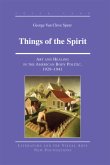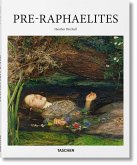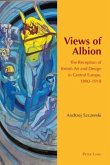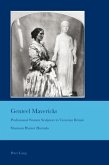In 1603, the beginning of the Stuart reign, painting was of minor importance at the English court, where the elaborately designed masques of Inigo Jones served as the prime medium of royal representation. Only two decades later, their most celebrated performer, George Villiers, the First Duke of Buckingham had assembled one of the largest and most significant collections of painting in early seventeenth-century Europe. His career as the personal and political favourite of two succeeding monarchs - James I and Charles I - coincides with the commission of a number of highly ambitious portraits from the hands of Peter Paul Rubens and Anthony van Dyck that displayed his body in spectacular manner. As the first comprehensive study of Buckingham's patronage of the visual arts, this book is concerned with the question of how the painted image of the courtier transferred strategies of social distinction that had originated in the masque to the language of painting. Establishing a new grammar in the competing rhetorics of bodily self-fashioning, this recast notion of portraiture contributed to an epistemological change in perceptions of visual representation at the early modern English court, in the course of which painting advanced to the central art form in the aesthetics of kingship.
Christiane Hille ist Wissenschaftliche Mitarbeiterin am Institut für Kunstgeschichte der Ludwig-Maximilians-Universität München.
George Villiers, erster Herzog von Buckingham, war als Vertrauter und Günstling gleich zweier englischer Könige - James' I. und seines Sohnes Charles' I. - politisch so einflussreich und umstritten wie im Europa des beginnenden 17. Jahrhunderts sonst vielleicht nur Kardinal Richelieu. Peter Paul Rubens und Anthonis van Dyck erhielten die Aufträge zu einer Folge von Portraits, mit welchen der Herzog dieser Wahrnehmung ein selbstgeschaffenes Bild seiner Person entgegenzusetzen suchte. Mit diesem Band nimmt die Autorin erstmals eine zusammenhängende Betrachtung der intensiven Sammler- und Auftraggeberschaft Buckinghams vor, welche die Kunstpolitik des Hofes maßgeblich beeinflussen und für eine Neubewertung der Malerei und visuellen Kultur im frühneuzeitlichen England verantwortlich zeichnen sollte.
Christiane Hille ist Wissenschaftliche Mitarbeiterin am Institut für Kunstgeschichte der Ludwig-Maximilians-Universität München.
George Villiers, erster Herzog von Buckingham, war als Vertrauter und Günstling gleich zweier englischer Könige - James' I. und seines Sohnes Charles' I. - politisch so einflussreich und umstritten wie im Europa des beginnenden 17. Jahrhunderts sonst vielleicht nur Kardinal Richelieu. Peter Paul Rubens und Anthonis van Dyck erhielten die Aufträge zu einer Folge von Portraits, mit welchen der Herzog dieser Wahrnehmung ein selbstgeschaffenes Bild seiner Person entgegenzusetzen suchte. Mit diesem Band nimmt die Autorin erstmals eine zusammenhängende Betrachtung der intensiven Sammler- und Auftraggeberschaft Buckinghams vor, welche die Kunstpolitik des Hofes maßgeblich beeinflussen und für eine Neubewertung der Malerei und visuellen Kultur im frühneuzeitlichen England verantwortlich zeichnen sollte.






